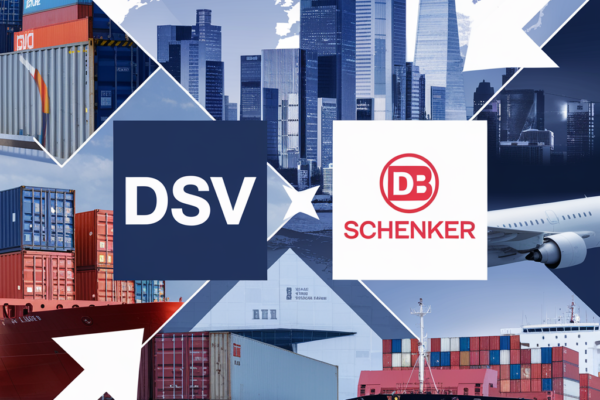In a move that could reshape the competitive dynamics of the global food delivery market, DoorDash has proposed a £2.7 billion ($3.6 billion) acquisition of UK-based rival Deliveroo at 180 pence per share – a 23% premium over its April 25 closing price of 146.6 pence[1][3][5]. The deal, if completed, would mark DoorDash’s most aggressive expansion into European markets since its $8 billion acquisition of Finland’s Wolt in 2021[5][7]. While Deliveroo’s board has indicated willingness to recommend the offer pending due diligence completion[3][6], significant regulatory hurdles and integration challenges loom over this potential marriage of delivery giants.
Deal Architecture and Valuation Considerations
Financial Mechanics of the Proposed Transaction
The 180 pence per share offer values Deliveroo at 1.03 times its 2024 revenue of £2.07 billion[1], representing a strategic premium for control of its European operations. This pricing comes at a critical juncture for Deliveroo, whose shares had declined nearly 50% from their 2021 IPO price before the offer[1][5]. The company’s recent financial turnaround – achieving its first net profit of £1.3 million in H1 2024 versus an £82.9 million loss in the prior year period[5] – makes it an attractive target despite slowing revenue growth (4.18% H2 2024 vs. 13.82% in 2022)[1].
Strategic Valuation Drivers
DoorDash appears to be paying for geographic diversification rather than pure financial metrics. Deliveroo’s operations in 10 markets where DoorDash lacks presence – particularly the UK (38% of Deliveroo’s 2024 revenue), Germany, and Australia – provide immediate scale in Europe’s $45 billion food delivery market[4][7]. The premium reflects potential synergies in combined operations, estimated by analysts at 15-20% of current opex through shared technology platforms and rider networks[4][7].
Strategic Imperatives Behind the Acquisition
DoorDash’s European Ambitions
This bid continues DoorDash’s pattern of using M&A for international expansion, following its Wolt acquisition. The company faces saturation in its core US market, where it holds 65% market share[7]. Europe’s food delivery sector, while competitive, offers higher growth potential with a projected 12% CAGR through 2027 versus 8% in North America[4]. Deliveroo’s established partnerships with 185,000 restaurants and 140,000 riders across Europe provides instant infrastructure that would take DoorDash 3-5 years to replicate organically[5][7].
Defensive Positioning Against Competitors
The acquisition serves as a countermove against Uber Eats’ European expansion and Delivery Hero’s growing quick-commerce capabilities[7]. By combining forces, the merged entity could control 38% of the UK market and 25% of Germany’s – critical mass needed to negotiate better terms with restaurant partners and optimize delivery density[4][7].
Regulatory Landscape and Antitrust Considerations
UK and EU Scrutiny
The deal faces intense regulatory examination, particularly from the UK Competition and Markets Authority (CMA) which blocked Microsoft’s Activision acquisition for 20 months[4]. The European Commission’s Digital Markets Act adds complexity, as regulators may view the combined entity as a “gatekeeper” subject to additional restrictions[7]. Historical precedent suggests a 60% probability of requiring asset divestitures – likely in overlapping markets like Ireland where both companies operate[4][7].
Comparative Analysis of Recent Deals
The proposed transaction differs from Just Eat’s troubled $7.3 billion acquisition of Grubhub in 2020, which faced cultural integration issues and eventual divestiture[4]. DoorDash appears to be applying lessons from its successful Wolt integration, where it maintained local branding while consolidating back-end systems[5]. However, the scale of this deal – creating a company with 45% of Europe’s cross-border delivery capacity – may trigger unique regulatory concerns[7].
Operational Synergies and Integration Challenges
Technology Platform Consolidation
Key synergy opportunities lie in merging machine learning systems for demand forecasting and route optimization. DoorDash’s “Project DASH” AI platform could potentially reduce Deliveroo’s delivery times by 18% while lowering costs by 12% through better order batching[4][7]. However, integrating disparate payment systems across 12 currencies and complying with varying EU data regulations presents technical hurdles estimated to require £150 million in implementation costs[4].
Workforce and Cultural Integration
The companies’ differing approaches to rider compensation – Deliveroo’s union partnerships vs DoorDash’s contractor model – could create labor relations challenges. Analysts predict 15-20% workforce reduction in overlapping corporate functions, potentially affecting 1,200 positions[5][7]. Successful integration would require maintaining Deliveroo’s strong local brand identity while leveraging DoorDash’s technological scale – a balance few cross-border acquisitions achieve.
Market Impact and Competitive Response
Potential Industry Reconfiguration
Rivals are already mobilizing responses – Uber Eats has accelerated its partnership with European grocery chains, while Delivery Hero secured $2 billion in new financing for drone delivery initiatives[7]. The deal could spark further consolidation, with private equity firms eyeing smaller players like Spain’s Glovo and Poland’s Pyszne.pl[4].
Supplier and Partner Dynamics
Combined purchasing power could pressure restaurant commissions downward from current 25-30% rates, potentially saving partners £150 million annually[4]. However, antitrust concerns may limit the merged entity’s ability to renegotiate terms with major chains like McDonald’s and Starbucks, which account for 22% of Deliveroo’s orders[1][7].
Financial Implications and Risk Assessment
Funding Structure and Balance Sheet Impact
DoorDash plans to fund the all-cash deal through $2 billion in existing liquidity and $1.6 billion in new debt[5], potentially increasing its debt-to-EBITDA ratio to 3.8x from 2.1x[7]. The company’s ability to maintain investment-grade credit ratings while absorbing Deliveroo’s £85 million in net debt will depend on rapid synergy realization[1][5].
Shareholder Value Considerations
While the offer represents a 52% premium to Deliveroo’s 12-month average price[5], some analysts argue the valuation underestimates regulatory risks. Bernstein’s D2C model suggests fair value between 170-190 pence, implying limited upside for DoorDash unless it achieves top-quartile integration performance[4][7].
Leadership and Governance Considerations
Management Structure Post-Acquisition
Industry sources suggest a blended leadership team, with Deliveroo’s CEO Will Shu potentially overseeing European operations while reporting to DoorDash’s Tony Xu[5][7]. This structure mirrors DoorDash’s Wolt integration, where Miki Kuusi remained as head of international operations[5]. However, cultural clashes in
Sources
https://stockanalysis.com/quote/lon/ROO/revenue/, https://stockanalysis.com/news/all-stocks/, https://www.pymnts.com/acquisitions/2025/deliveroo-in-talks-to-be-acquired-by-doordash/, https://www.ainvest.com/news/doordash-3-6-billion-deliveroo-bid-strategic-gamble-high-stakes-2504/, https://techstartups.com/2025/04/25/doordash-offers-to-acquire-deliveroo-for-3-6-billion-in-bold-expansion-into-europe/, https://www.investing.com/news/company-news/deliveroo-in-talks-with-doordash-over-potential-acquisition-offer-93CH-4005246, https://www.ainvest.com/news/doordash-3-6-billion-bid-deliveroo-strategic-gamble-global-food-delivery-wars-2504/, https://www.morningstar.co.uk/uk/news/AN_1745603266944496500/deliveroo-confirms-speculation-of-doordash-offer-at-180p-per-share.aspx





